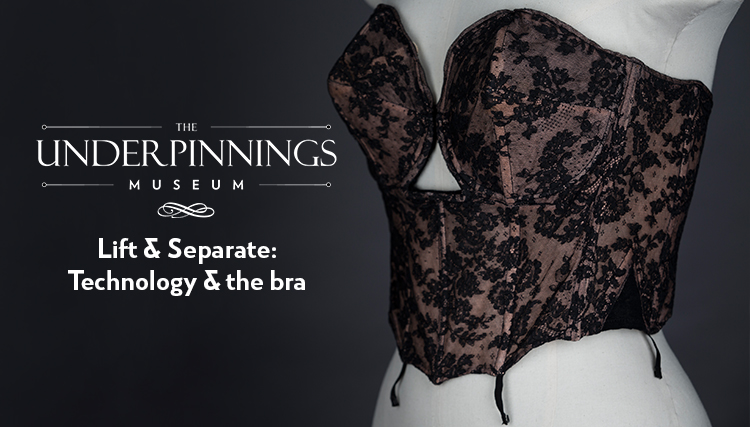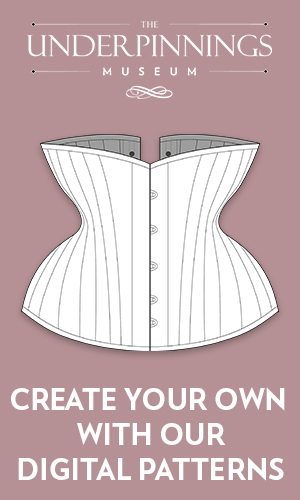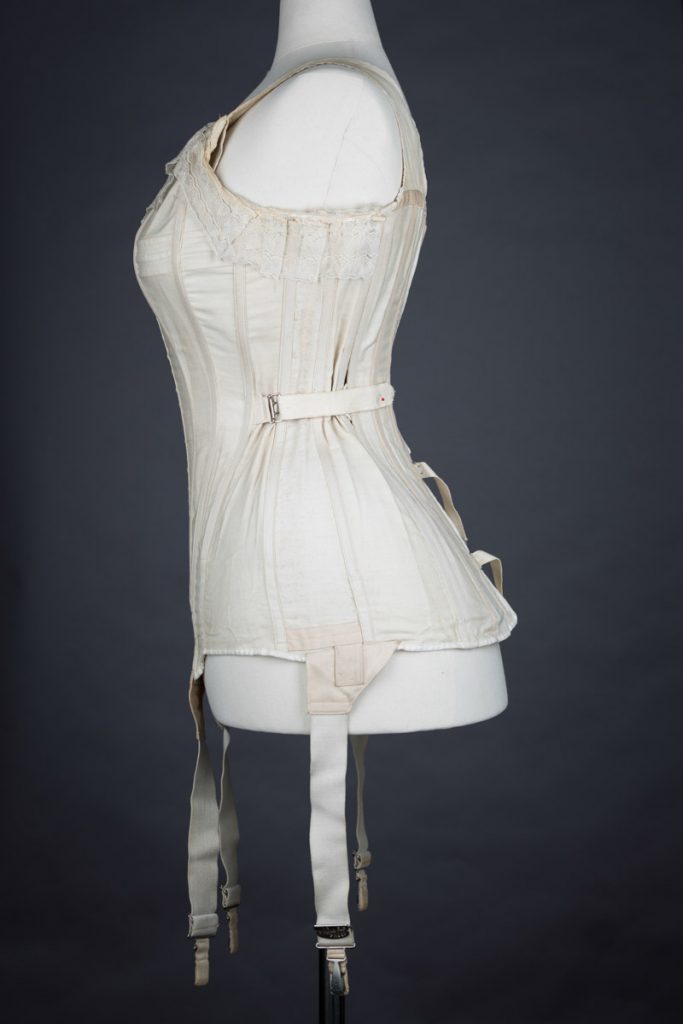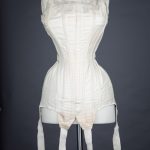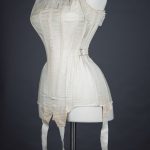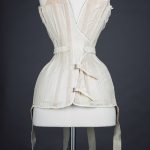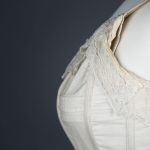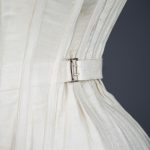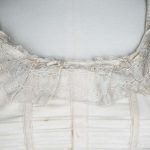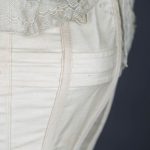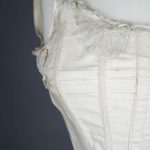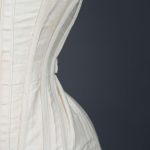Before this exhibition starts, we must address something very important. As fashion historian Valerie Steele states in her book The Corset: A Cultural History, ‘no one person invented the brassiere. Various types of bust-bodice, soutien-gorge and brassiere had been patented and advertised in the nineteenth and early twentieth centuries.’ This exhibition does not focus on the invention of the bra or the history of its design, but it will concentrate on the technology which made some of the twentieth century’s most iconic looks possible. These are the developments in fibres and stitching technique which took us from sturdy Edwardian ‘bust improvers’ to the light ‘no-bra’ look of the 1970s, that is popular once again today.
The bra is a unique and important garment, providing a woman with support for her breasts but also shaping the female form to the latest fashionable ideal. Although it plays a vital part in both fashion history and women’s history in the twentieth century, the bra is often overlooked or only discussed from a purely aesthetic or erotic perspective. However, technology’s role in its fascinating history cannot be understated.
In the first decade of the twentieth century, fashionable straight front corsets provided less bust support than women were used to and so the popularity of various types of brassiere increased. These new styles of garment were often worn by fashionable women for modesty under increasingly sheer Edwardian blouses, and also by dress reformers as an alternative to heavily boned corsets. As health was often a focus for underwear advertising at this time, fabrics like wool, cotton and Aertex – which was invented in the UK in 1888 – were sometimes used for these garments as it ensured they were breathable in the summer and warm in the winter.
Jane Farrell-Beck and Colleen Gau state in their book Uplift: The Bra in America that ‘By the mid-1910s, brassieres rather than corsets had become the source of increased business in foundation departments’. The increasing prominence of women in the public sphere – through work and recreation outside of the home – meant that many more were moving over to wearing less restrictive garments and the modern department stores, which were an extremely popular place to shop, were keen to cash in on this trend.
